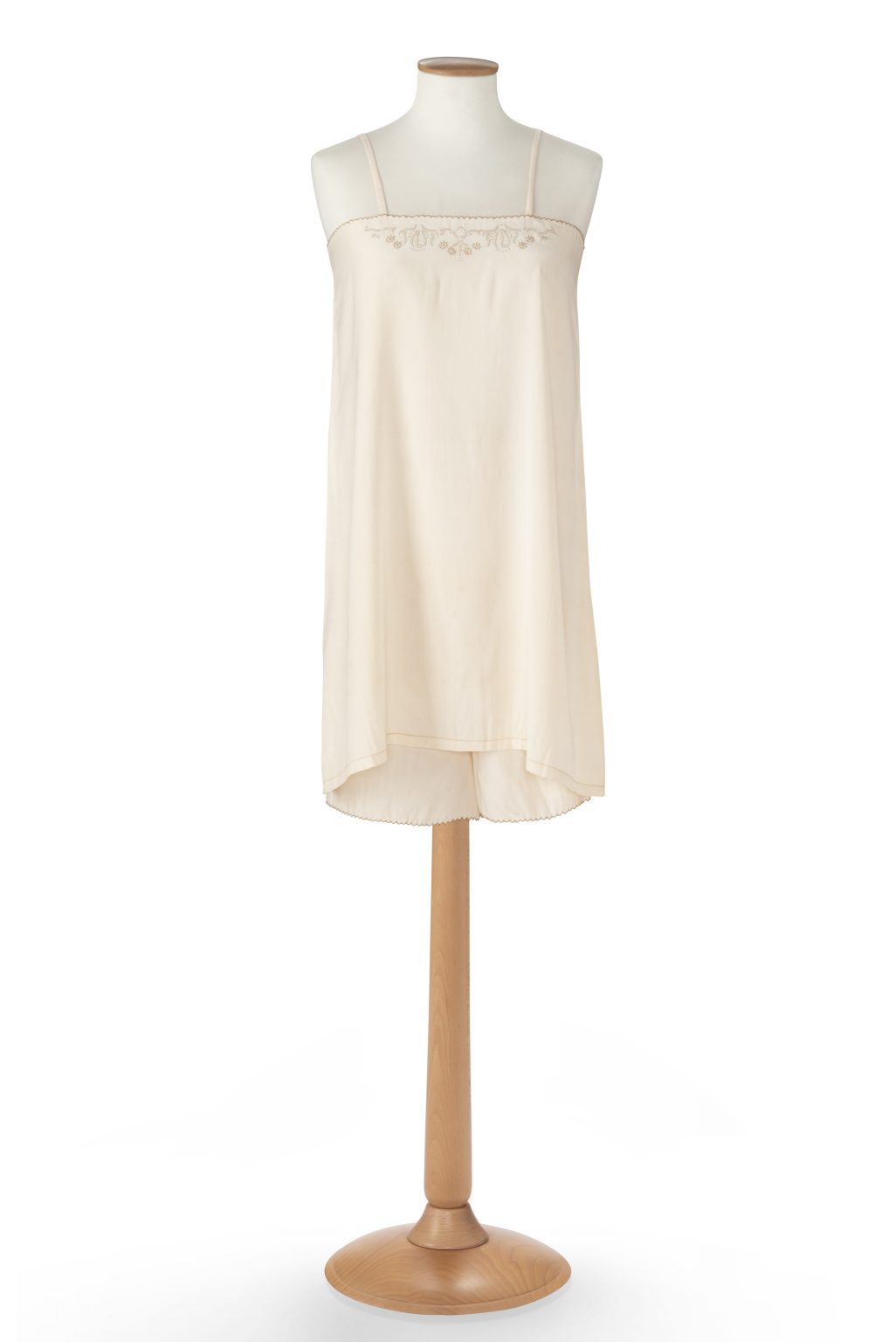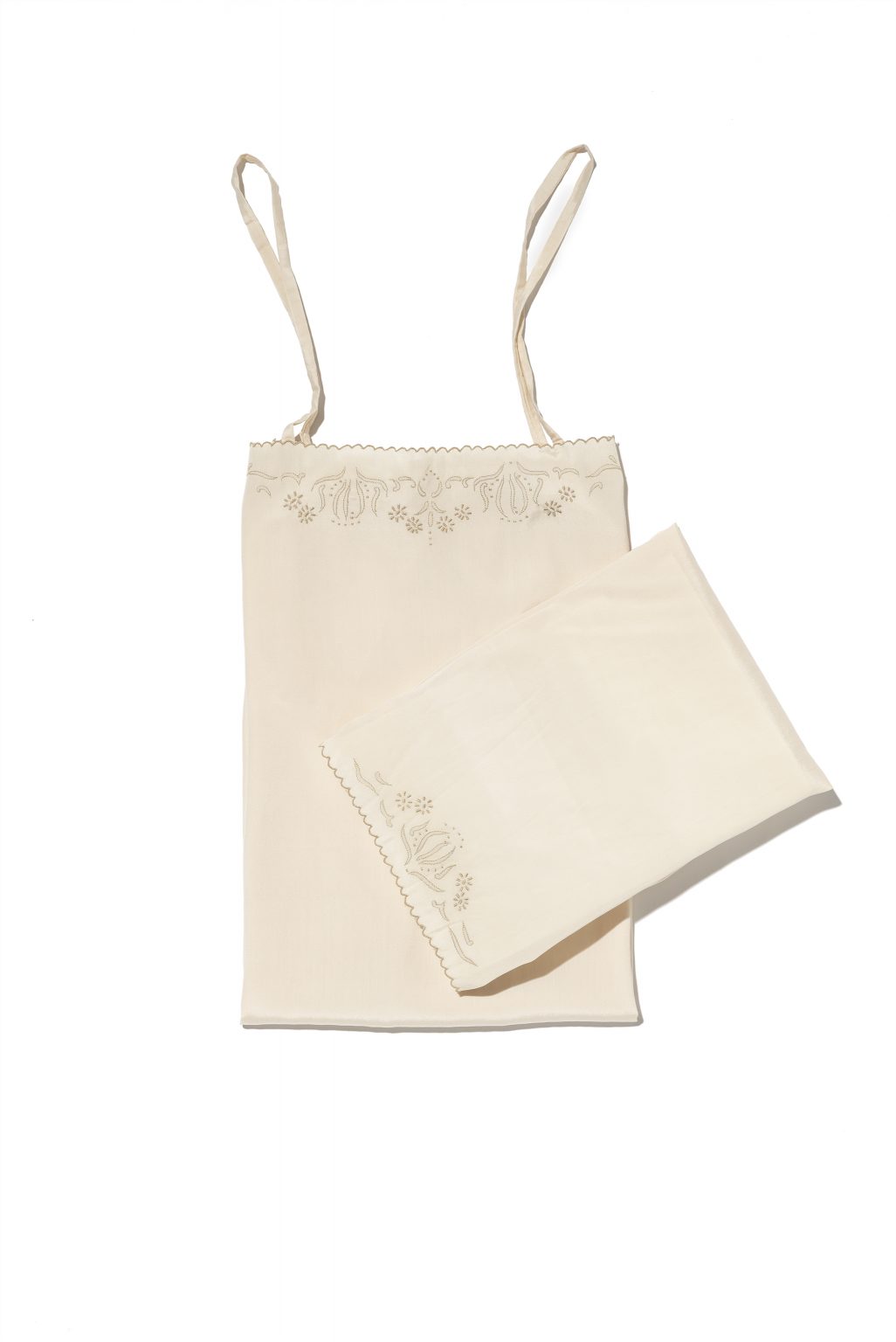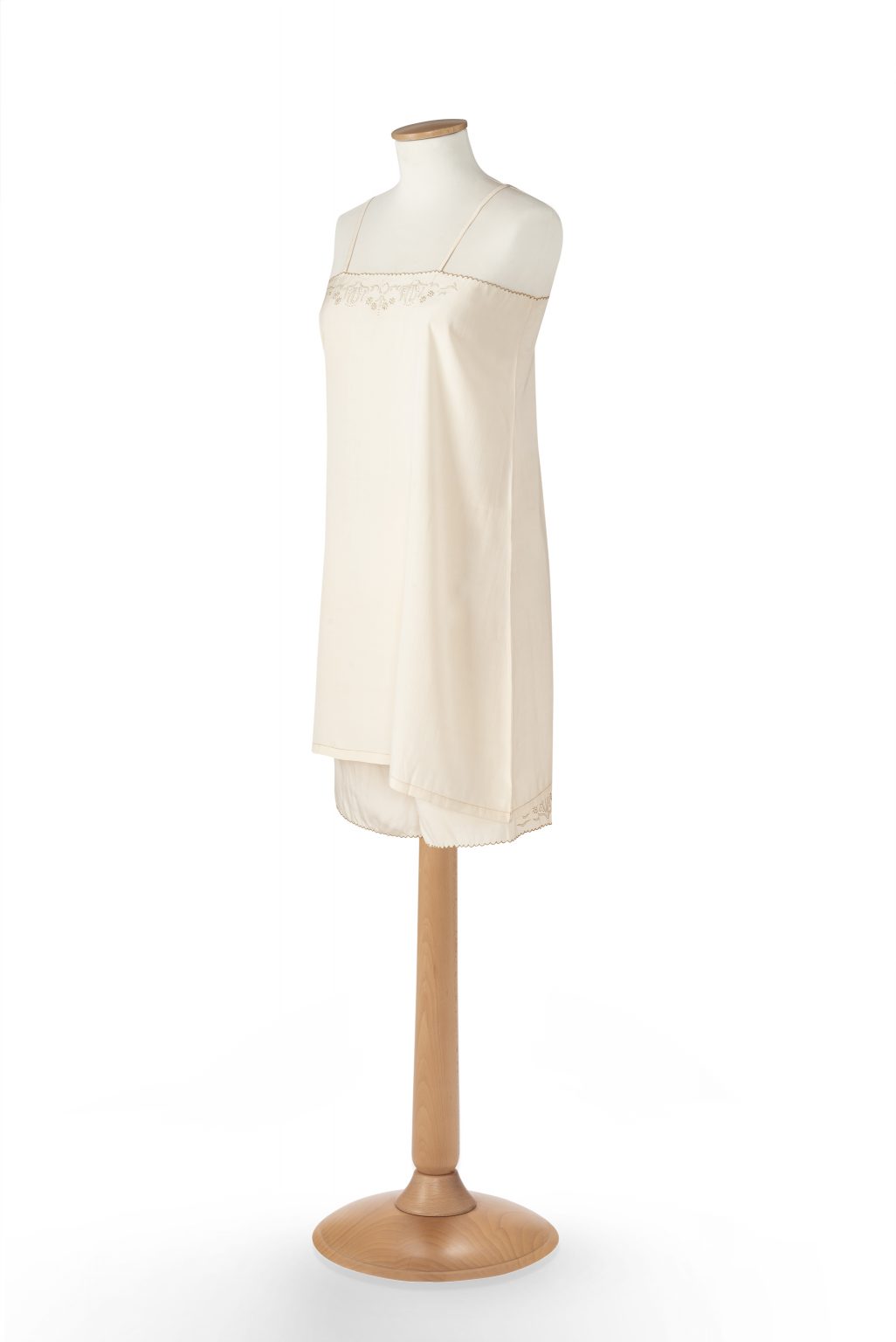
Linen 1920 -1930
Lingerie set of ivory silk taffeta petticoat and knickers, hand-embroidered colour on colour, circa 1925, Camilla Colombo Collection.
Details


Fashion
The new need for practicality in women's clothing with the outbreak of the First World War included underwear. As with all clothes, the garments underneath gradually became simpler, less numerous and less voluminous. The need to shape the body, shifting and creating volumes, in order to achieve a highly unnatural ideal, quickly disappeared, and the element that fulfilled this function, the corset, lost its raison d’être until it disappeared altogether, replaced by less constrictive elastic girdles. Knickers shortened and closed in the middle, becoming mid-thigh length culottes. Petticoats first shortened, then vanished almost completely, and day shirts became slips. If some items of underwear disappeared during these years, others made their appearance, first and foremost the bra, which, after having made a timid appearance in the early twentieth century, became popular in the twenties, beginning the process that would make it a fundamental element of women’s underwear even today.
Materials also evolved. Silk, or new artificial fibres, increasingly replaced the ubiquitous linen and cotton, and, thanks to synthetic dyes which were now much more stable, the universal white was often set aside in favour of delicate pastel colours.
Technical info
Women
Women and sensuality
Between the second half of the 19th century and the early 20th century, the figure of the woman, like a butterfly, underwent a metamorphosis. Writers and painters tried to capture her femininity in their works, influenced by her charm.
In their eyes, two opposing stereotypes appeared: the fragile woman submissive to the male will, and the woman with fatal charm. Showgirls, women of pleasure, courtesans, used seduction and their sinful, bewitching beauty. Sometimes they became obsessed with the artifice of their own image and ended up being shrouded in a dark aura, portrayed as victims of the evil of living, mad and diabolical creatures. Despite this, men were unable to escape their perverse and cursed fascination. At the turn of the century, it was the fantasies of odalisques and dancers that attracted artists: Poiret interpreted them, modelling the image of a woman from distant lands, elegant and sophisticated. Exoticism on the one hand, and Japonisme on the other,
intersected with the myth of the geisha, a figure with a highly seductive power, who aimed to achieve exterior and interior beauty through knowledge and the arts. With the decline of the Belle Époque, women were stripped of all pretense, preferring an androgynous charm that the Futurists embraced with fervour, creating a bond of love between woman and machine. The advent of war and the new role of women also led to a renewal in aesthetics, definitively freeing the body from past constraints. The woman painted by the Futurists did not seduce with her clothes but by being herself and she prepared the ground for new female archetypes of strong and independent women. The garçonne definitively broke with aesthetic canons and adopted masculinity even in her attire. She was a transgressive woman with heavy make-up and a cigarette between her fingers. This image of rediscovered strength lasted until the 1930s.